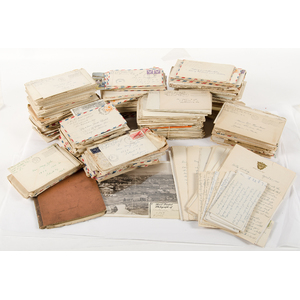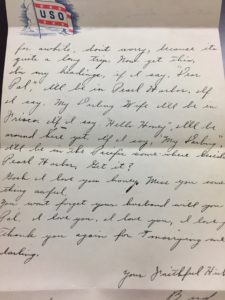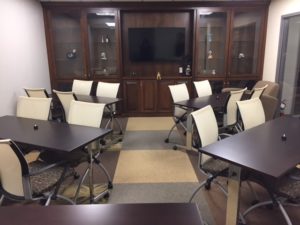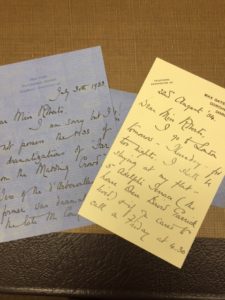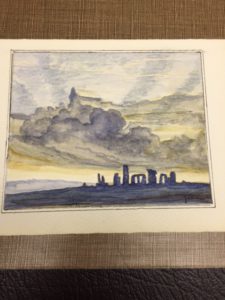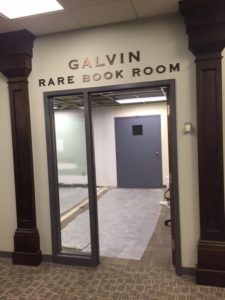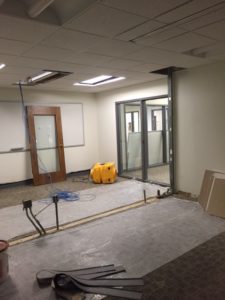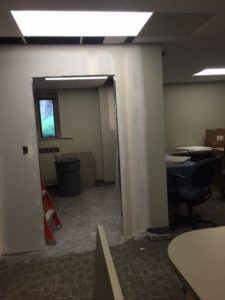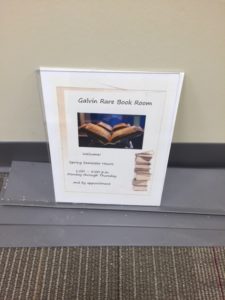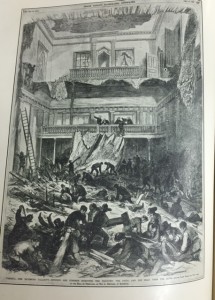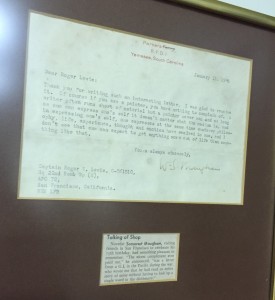Another Spring Semester comes to a close here on campus. This week is the last week of classes, then finals, and the thrill of graduation weekend and summer. This semester has brought many changes to Rare Books & Special Collections, including the opening of the new Reading Room and Classroom Annex space. If you haven’t had a chance to see the newly remodeled spaces yet, please drop by the next time you are on campus for a tour!
In addition to new spaces, there have also been many new additions to both the rare book and the manuscript collections in Boatwright Library. The last blog post talked about the new World War II correspondence collection, but I wanted to share also the wonderful new additions to the maritime and naval collections that have been added this spring.
Three new first editions have been added to the rare book collection, which already houses an impressive set of travel and maritime-related works. The first new addition is a 1777 2-volume first edition of George Forster’s A Voyage Round the World, In his Britannic Majesty’s Sloop, Resolution, commanded by Capt. James Cook, during the Years 1772, 3, 4, and 5. This set adds to our materials on both sea-faring voyages and exploration literature by adding another version of Cook’s sailings.
The second new first edition account is a 1779 first edition of A Voyage to New Guinea, and the Moluccas, from Balambangan: including an account of Magindano, Sooloo, and other islands; and illustrated with thirty copperplates. Performed in the Tartar galley, belonging to the Honourable East India company, during the years 1774, 1775, and 1776 to which is added, a Vocabulary of the Magindano Tongue. This account was written by one of the most experienced ship captains and documents social and cultural life as well as maps, panoramas, coastal charts, genealogy, and a English to Magindano and Papua vocabulary.
The third new addition to the rare book maritime collection is the 1802 first edition travel account of a woman traveler through the Crimea and Black Sea regions. The book is written in the form of letters by Maria Guthrie, and translated and edited by her husband, Matthew Guthrie. Her letters document her varied encounters during her travels, including a whirling dervish ceremony and a letter concerning Jews in the Crimean region.
Three new manuscript maritime collections have also been added to the Boatwright Library archival materials. The largest of the three documents the work of U.S. Naval Commander Horace Elmer, who had an illustrious naval career including heading the department of seamanship at the U.S. Naval Academy from 1883 to 1886. His last service included organizing and commanding the Mosquito Fleet, including the inner coast defense of the Atlantic and Gulf States during the Spanish-American War. The archival collection includes journals from his time at the naval academy and a number of ship’s logs which include precise technical sketches including the engines of the U.S.S. Monitor. There are also several scrapbooks including one from his daughter, Edith Elmer Wood, which contains images of family, the Naval Academy, and the 1893 Chicago World’s Fair.
Two smaller manuscript items have been added as well. The first item is the journal of Edward Reavely, Quartermaster First Class serving on the U.S.S. Chester in 1917. As a destroyer, the Chester was active during World War I as an escort between Gibraltar and Britain. The second item is the private journal of Edward Paul Duffy, a printer on board the U.S. flagship Trenton, written in 1881. While on board, Duffy printed the twice-monthly Trenton Herald and served as a special correspondent to the Baltimore Sun. His journal documents his print work, the weather, and trips off the ship as well.
Each of these new additions bring new stories of explorations, travel, and sea voyages just waiting to be discovered.

